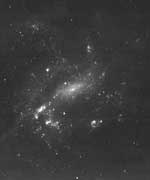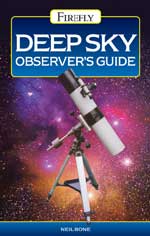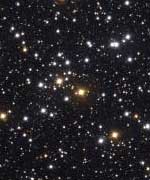
1.) Which class of Earth-crossing asteroids do you find most interesting, Atens or Apollos? (Erimus)
Personally, I find the Atens more interesting, simply because their orbits keep them out of the opposition region for a larger fraction of the time than the Apollos, making them comparatively more difficult to find. Current population statistics are biased against Atens because of the emphasis on the opposition region by the surveys.
2.) Which particular NEO do you find most interesting? (Erimus)
Which day of the week is it? Let’s see, if it’s Friday, I’d take 2000 SG344. This object is interesting because of its low velocity relative to Earth, which argues against it having been perturbed out the main belt. We can pretty much rule out it being manmade, now that another better candidate for the Apollo 12 S-IVB has been found. So, I’m leaning toward it being a piece of lunar ejecta, which could well be unique among the known objects. Because of its relatively high impact probabilities, I’ve given the object higher priority for astrometric observation, getting it a year and a half ago when it was magnitude 26, probably the faintest NEO ever observed.
If it’s Saturday, I’d go with 2004 MN4. It’s hard to ignore an object that will pass less than 6 Earth radii from the Earth just about 24 years from now, becoming bright enough to be visible to the unaided eye.
If it’s Monday, I’d go with 2004 XZ130. With a record small semimajor axis of 0.617 AU and a record small aphelion distance of 0.898 AU, it’s the kind of asteroid I’ve been interested in finding for a long time. Because it never gets into the opposition region, it would never be found by an opposition survey. Not much is known about this population of asteroid, because of the observational bias. We’re taking the first steps toward reducing that bias.
Oh, it’s Thursday. Let’s see, choices, choices…
3) What is the impact to the Earth, if an asteroid were to hit the Earth? Will it changes the weather or give any chemical or other effects? have we prepared for that? Should ordinary people know and be aware of it? (Fari)
It all depends on the size of the object that hits. If it’s small like a meteorite, it would have no significant effect. Something larger, like the one that produced Meteor Crater in Arizona, won’t change the weather, but significant local damage would occur. An object of the kind that is believed to have wiped out the dinosaurs would indeed have a major effect on the weather. So much dust would be ejected into the Earth’s stratosphere, that sunlight would be blocked, halting photosynthesis and disrupting the food chain all the way up to humans. Some of us have personally witnessed the length of time it can take for small amounts of dust to settle out of the stratosphere, given the El Chicon and Mt. Pinatubo volcanic eruptions of the 1980s and 1990s. Imagine how long it would take for a large amount of dust to settle out of the statosphere.
Currently, humans are not prepared to deal with a major asteroid impact.
Ordinary people who wish to be scientifically literate should be aware of the situation, but it’s not something over which to lose sleep.
4) What do you believe the chances are that the earth will be hit by an asteriod/comet that could cause world wide devastation within our lifetime? (Guest_SeanO)
Very small, less than one in ten thousand. That’s based on an assumed human life span of approximately 100 years (a little long, but we’re dealing with just an order of magnitude estimate here) and an average of one such impact every million years.
5) Do you have any speculations you could share with us about the exploitation of these objects, especially the sort of required technologies and favoured strategies required? (eburacum45)
It is true that some asteroids became hot enough for a long enough time to melt internally and differentiate, with the heavy metals sinking to their cores. Once catastrophically disrupted by a collision with another asteroid, the cores have been exposed, with some of the fragments falling to Earth, producing our nickel-iron meteorites. Some entrepreneurs are very interested in these cores because of the rare metals that could be extracted from them, such as gold, silver, and platinum.
Meanwhile, others are interested in exploiting the material necessary to sustain human existence in outer space. The one item that is most essential to human life is water. That’s one reason why there is so much interest in looking for water in the permanently shaded regions of the lunar poles. But some near-Earth asteroids may be rich in hydrated minerals, so it might be possible to extract water from these objects. Now, water sounds a lot more mundane than gold, silver, or platinum, but when you consider the alternative of hauling water up from the bottom of the deep gravity well that is Earth, you begin to realize that a source of water in outer space would be worth its weight in gold.
In both cases, a source of energy would be needed for the extraction process, but the Sun provides ample amounts of that. We just need to find an efficient way of harnessing that power. Some people want to change the orbit of an asteroid and park it around the Earth, sort of like a second moon, so that it is easier to get to on a routine basis. Needless to say, most of this work is very speculative in nature. Some scientists are probably actively thinking about ways to do the job, but I’m not aware of any major development of infrastructure at this time. One challenge is to work in the weak gravity field of an asteroid. Many terrestrial approaches simply won’t work very well on an asteroid because of the weak gravity.
6) Why is the asteroid belt so far away, in relation to the rocky planets? Why for instance do we not have an asteroid belt between Earth and Venus? (Guest)
The rocky planets range from 0.4 to 1.5 AU from the Sun, and the main asteroid belt extends from roughly 2.1 to 3.2 AU. Practically next door neighbors considering the scale of the Solar System, which extends to roughly 50 AU when you think of the trans-Neptunian objects, and even farther when you think of the Oort cloud comets, like 50,000 AU. So the asteroid belt doesn’t seem all that far away to me.
Asteroids between Venus and Earth do not have particularly stable orbits, at least compared to the 2 to 3 AU region of the Solar System. Nevertheless, some asteroids are believe to inhabit this region of space. Because they never reach the opposition region, they are harder to find. Looking in the part of the sky close to the Sun has been a research interest of mine for over a decade, and we’re just now finding the first inhabitants of this region. The numbers are too small at this time to be thinking in terms of a “belt”, but who knows what we’ll find after an extended investigation?
7) Are two (or more) asteroids ever found in orbit around each other, or will objects that small inevitably drift apart? (gnosys)
There are approximately four dozen asteroids known to have satellites in orbit around them. In some cases, the primary is large and the secondary is small, as in the case of Dactyl orbiting Ida, as imaged by the Galileo spacecraft while en route to Jupiter. In other cases, the two components are more nearly equal in size, such as 90 Antiope. Satellites of asteroids have been found among the near-Earth population, the main belt between Mars and Jupiter, and among the trans-Neptunian objects.
As long as the satellite is in a bound orbit, a source of energy would be necessary to cause them to separate.



